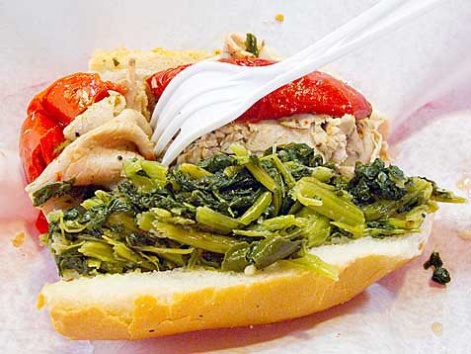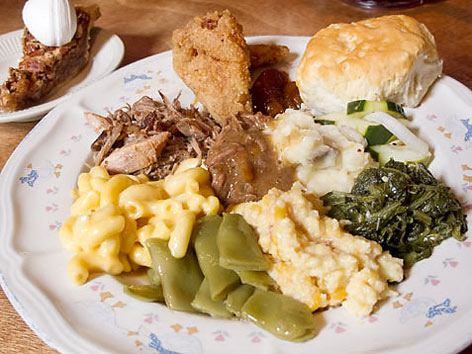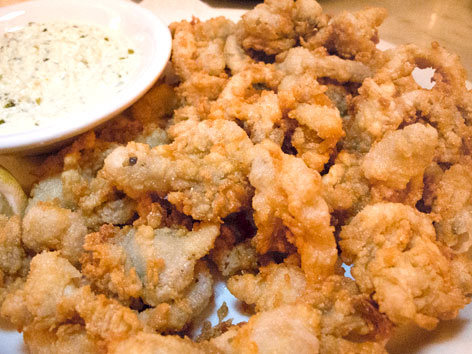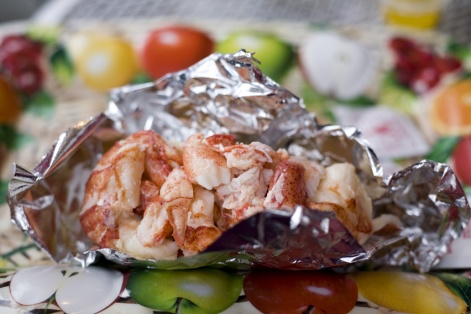The Case for American Food
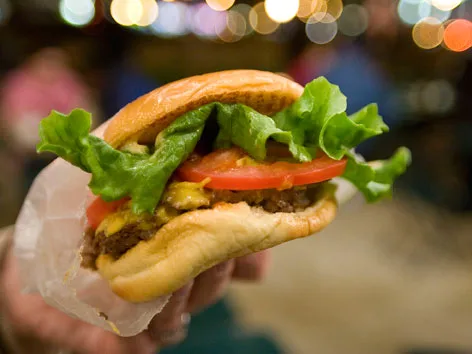
What is American cuisine—and is it as bad as foreign menus would have us believe? Here’s a look at what is (and what should be) considered American food abroad.
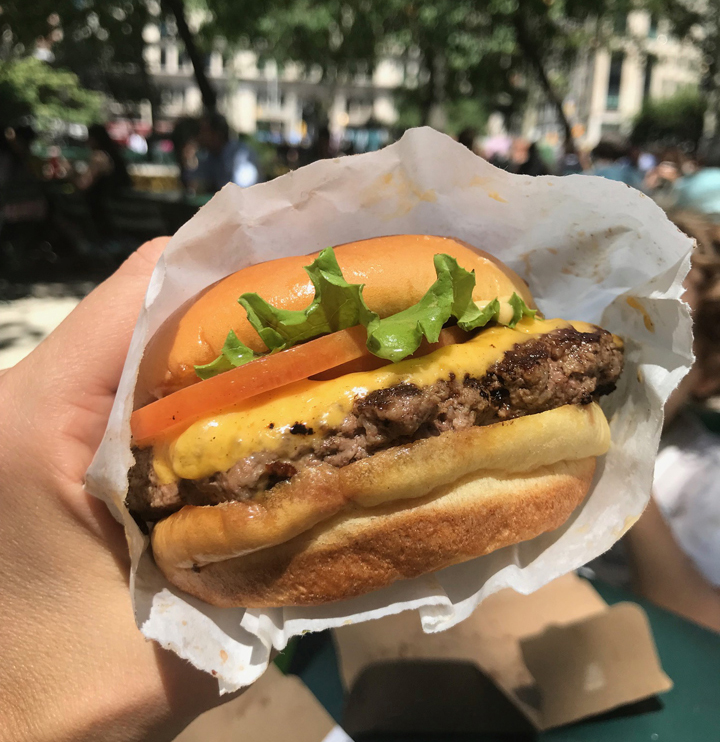
Shack Shack burger in NYC
You’re at your family BBQ for the 4th of July. What’s on the menu? Why, hot dogs and hamburgers, of course! Classic Americana summer fare, complemented perhaps by some chicken wings, mayo-based salads, and corn on the cob. Some of the very same stuff that has come to represent, in many ways, “American food,” at least as distilled down on menus around the world, from Colombia to India. And while I would chow down on those burgers and dawgs with the best of them at said BBQ, this makes me, as an American, kind of sad.
America, we can do better than that!
Actually, America does do better than that, but so-called American cuisine does not. At Eat Your World, we’ve covered quite a few destinations not particularly celebrated for their traditional foods—think London, Amsterdam, Detroit—and we’ve been pleasantly surprised by what we’ve found. But the U.S. as a whole may have the worst food rep of all.
It’s not our fault—look at how big our country is! Look at the crazy diversity: Like everything else here, most of our food comes from someplace else. We can’t expect the random hotel restaurant in, say, Turkey, to pick up on the nuances of BBQ and jambalaya, two dishes that do a splendid job of reflecting German, Czech (BBQ), Spanish, French, and African (jambalaya) influence in what’s become iconic American cuisine. These are foods that tell the messy, complicated history of the U.S.: the good, the bad, and the ugly. It’s so much easier to slap down some “American pancakes” or chicken fingers and call it a day.
(The irony, of course, is that the bulk of what’s considered American food also hails from elsewhere. Hot dogs are from Germany. Hamburgers, too, although a little place in Connecticut claims to have invented them in sandwich form. Pancakes and apple pie? The Netherlands was doing those long before we were.)
So how did America become the land of hamburgers and fries? Well, surely McDonald’s had something to do with it. And fast food or not, Americans do have an affinity for burgers, in their myriad incarnations around the country. But why can’t we effectively communicate to other countries that American cuisine goes far beyond that? Why can’t we at least export some good-quality, family-style Southern American food, or some New England-style clam shacks, or a New Orleans-themed po’boy shop?
This is a matter of not seeing the trees for the forest. It’s no secret to many of us that the best American food is found in the details, the various nooks and crannies of this great big hodgepodge of a country. Therefore, if we were to ever open an “American restaurant” somewhere abroad, we might include the following.
American Cuisine Menu
New Orleans-style BBQ shrimp
One of our absolute favorite dishes in this country. Unpeeled, head-on jumbo shrimp swimming in a buttery, peppery, Creole-spiced sauce. It’s outrageously delicious, and indicative of NOLA’s bold and beautiful food culture.
New Haven-style white-clam pizza
This pizza is topped with chopped clams, fresh garlic, grated Romano cheese, olive oil, and oregano. A perfect sea-salty marriage of Italy and New England.
New York egg cream
Just one of old New York’s beloved Jewish-derived dishes, it’s a frothy, chocolaty throwback to simpler, soda-fountain times. We’d probably have to include some bagels or pastrami on rye in there too.
Texas brisket
We’d have to hire a professional pit master to achieve the perfectly blackened bark and telltale pink smoke ring on tender Central Texas-style brisket, but it’d be worth the extra expense.
Philadelphia-style roast pork sandwich
The Philly cheesesteak is too easily misrepresented, and besides, locals will tell you this is the true sandwich of Philadelphia, reflecting the area’s Italian heritage: thin-sliced, juicy slow-roasted pork piled onto a hoagie roll with sharp provolone cheese and garlicky broccoli rabe.
Family-style Southern food
Every Sunday would be “Southern Food Sunday,” in which we’d enlist a Southern chef to make a mouth-watering spread like this one, from Nashville: pulled pork, mac-and-cheese, green beans, sweet corn pudding, collard greens, cucumber-onion salad, mashed potatoes, brisket with gravy, biscuits and peach preserves, fried chicken, pecan pie.
Massachusetts fried whole-belly clams
Of course, we’ve have to import the real deal from Ipswich to fully realize this dish’s crispy, briny glory. I might also include some colonial-era Indian pudding on the menu.
Photo by Heather DiPiazza
Maine lobster roll
Light on the mayo, please—this is easily overdone. I think we’d have to include a buttery Connecticut-style lobster roll too, for the sake of comparison.
Key lime pie
The sweet tartness calls the sunny, sultry Florida Keys immediately to mind.
I could go on, and on, and on … a Chicago-style Italian beef sandwich, Hawaiian poke, Western North Carolina (pork) BBQ, a Detroit Coney dog (hey, we can get one hot dog on the menu), Kentucky bourbon. And if we had to choose a hamburger style, it’d be the Southwest’s green chile burger.
So on this Fourth of July, let us celebrate not only independence, but the unique and varied foodstuffs—born of each region’s particular soil, sea, and immigration history—that have come to define every corner of this country. And let us not forget from whence they came: Without the people and places behind each dish, we’d have nothing interesting to eat here.
Your turn: What’s your favorite American regional food?

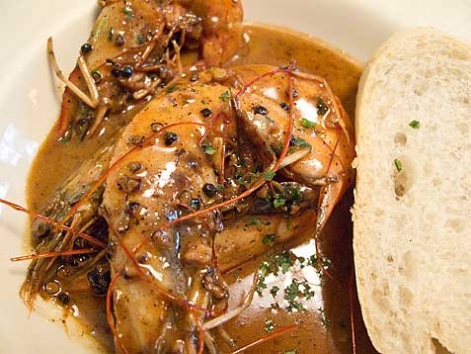
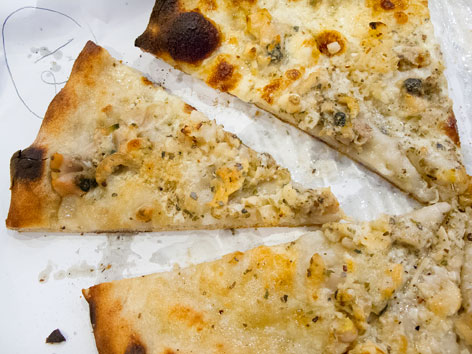

.jpg)
